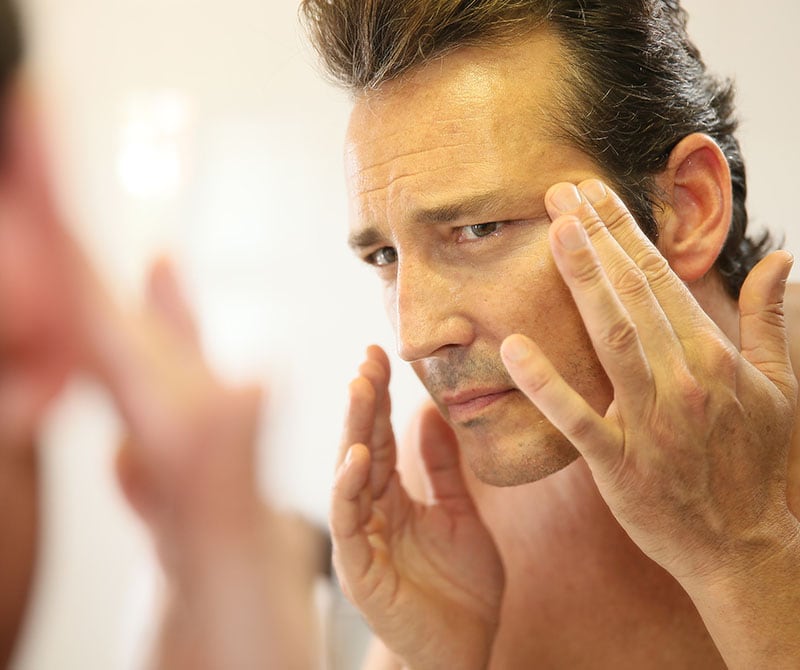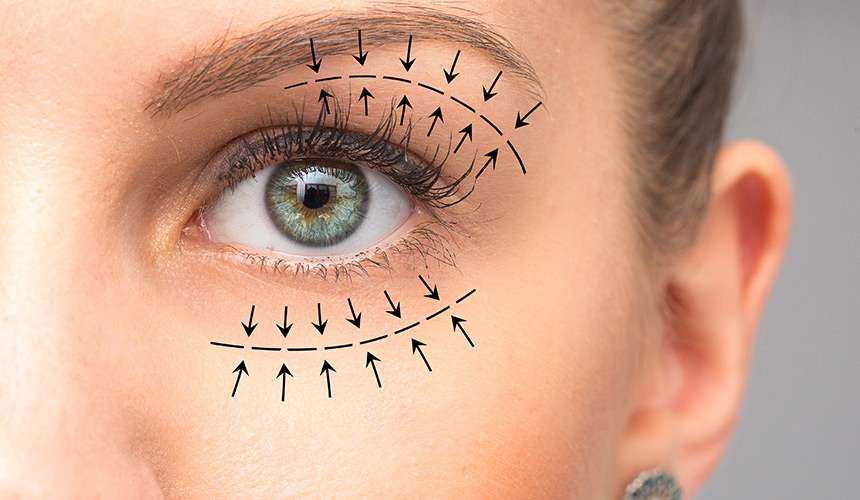Blepharoplasty is a procedure in which excess fat and/or skin is removed along the upper or lower lids. These areas may exhibit wrinkles, loose skin, and bulges due to either heredity/genetics or the aging process. Pouches or bags of the upper and lower lids are generally due to herniations of the fat normally located in the eye socket.

A refreshed appearance, with a younger, firmer eye area.
Widening of visual fields if excessive upper lid skin has partially blocked vision.

In this operation the fat of the lower eyelids is removed through an incision on the inside of the eyelid, usually without need for an external incision. It offers many advantages over the traditional approach where an external incision is used for access to the “bag” but is limited in its ability to tighten skin and reduce wrinkling.
Yes, we often recommend a phenol chemical peel of the lower lid region 2-3 months after the blepharoplasty.
Recently emphasis has been placed upon the importance of more conservative fat removal to prevent a sunken or unnatural appearance postoperatively. In some fat sparing techniques, emphasis is on the repositioning rather than removal of periorbital fat.
In upper eyelid surgery, Dr. Waldman first marks the individual lines and crease of the lids in order to keep the incisions as invisible as possible along the natural folds. The incision is made and excess fat and loose skin are removed. Fine sutures are used to close the incisions, thereby minimizing the visibility of any incision.

In lower eyelid surgery, Dr. Waldman makes the incision in an inconspicuous site along the lash line and smile creases of the lower lid. Excess fat, muscle, and skin are then trimmed away before the incision is closed with fine sutures.
Under normal conditions, blepharoplasty can take from one to two hours.
Dr. Waldman performs most blepharoplasties in his fully accredited (AAAASF) office surgical facility.
Dr. Waldman performs most blepharoplasties under local anesthesia with light intravenous sedation.
A blepharoplasty will not eradicate the wrinkles around the eyes (crows feet) and these are usually best treated by other means such as laser resurfacing or BOTOX® Cosmetic. By combining resurfacing or chemical peels with blepharoplasty, Dr. Waldman is able to achieve a more complete rejuvenation of the periorbital area (the area around the eye and eyelids) which he believes should be the goal of eyelid surgery.
Dark circles under the eyes may improve if they are related to large bags but a blepharoplasty will usually not improve the dark pigmentation of lower eyelid skin. Phenol chemical peeling can improve dark pigmentation. Droopy eyebrows are also not corrected by a blepharoplasty. Instead this requires a brow lift or forehead lift.
“Just had a simple procedure done here this week. Got a new cosmetic set from the skincare office that seems to be reducing some redness on my face! I plan to have a surgery done in the future. Pricing is very affordable as I have been to one other practice outside of the state that had higher rates. Would definitely recommend!”
Dr. Waldman usually removes sutures within 4-5 days. Bruising and sensitivity to light last at least a week or two and swelling progressively disappears over several weeks. Patients can use eye makeup shortly after sutures are removed and contact lenses can be worn when comfortable (usually within 3-7 days).
Additional procedures that would enhance the result of a blepharoplasty are forehead lift, facelift, chemical peel or laser skin resurfacing.
Complications are usually rare and minor when blepharoplasty is performed by a competent plastic surgeon. Patients with some medical conditions such as thyroid disease, hypertension and patients with dry eyes have an increased risk following blepharoplasty.
All patients’ experience some bruising and swelling for several days after surgery. As with all surgery there are risks and potential complications and the risks and benefits must be carefully considered prior to the procedure.